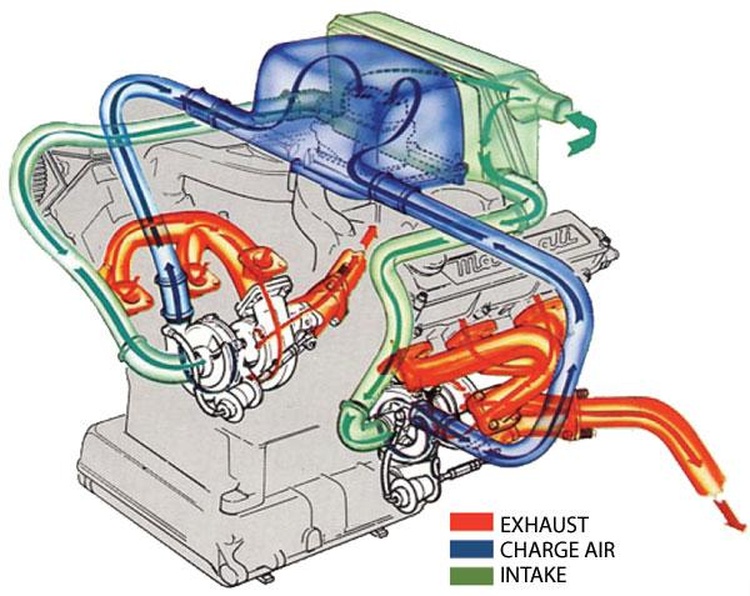[Editor’s Note: This article originally appeared in the April 2006 issue of Grassroots Motorsports.]
Italian cars seem to fall into two distinct categories, with fun but quirky Fiats and Alfa Romeos inhabiting one group and all-out exotics such as Lamborghinis and Ferraris comprising the other. In the competitive 1980s, though, at least one Italian carmaker attempted to straddle the line between mass …
The Turbo Arms Race
While the Biturbo’s twin-turbocharged V6 shares no internal parts with its older siblings, the design is a carryover from Maserati’s Citroën days.
As with the Merkur XR4Ti and Volvo 240 Turbo, the Maserati Biturbo’s development was a product of the turbo arms race of the late 1970s and early 1980s. Expensive gas (at least by 1980 standards) and tightening emissions regulations encouraged many manufacturers, including Maserati, to use turbochargers rather than engine displacement to meet performance goals without sacrificing economy. When itinerant financier Alejandro De Tomaso took over the ailing Maserati company in 1975, he saw the changes on the horizon. He understood that the carmaker’s large GTs were not well suited to the competitive global automotive market and shaky economy of the 1970s. He believed Maserati’s future was in turbos, small engines and mass production, three criteria that dictated the basic architecture of the Biturbo. Following the de Tomaso mandate, engineers at the company designed a dual-turbo system and a two-liter, Italian-tax-avoiding V6 to power the car. The basic engine was not particularly advanced; it was based on the powerplant designed for the Citroën SM, but the Biturbo’s blow-through carbureted induction system was completely new.
The chassis was typical of 1970s European cars and adequate for the Biturbo’s intended performance. The front suspension featured MacPherson struts and manual steering, while the rear suspension used semi-trailing arms similar to the contemporary BMW and Ford Sierra designs, complete with unwanted toe change under acceleration. Brakes were solid discs at all four corners of the car. The completed “People’s Maserati” was introduced to the European market Dec. 14, 1981, and long waiting lists of eager buyers greeted the…
Click Here to Read the Full Original Article at Grassroots Motorsports Online Articles…

